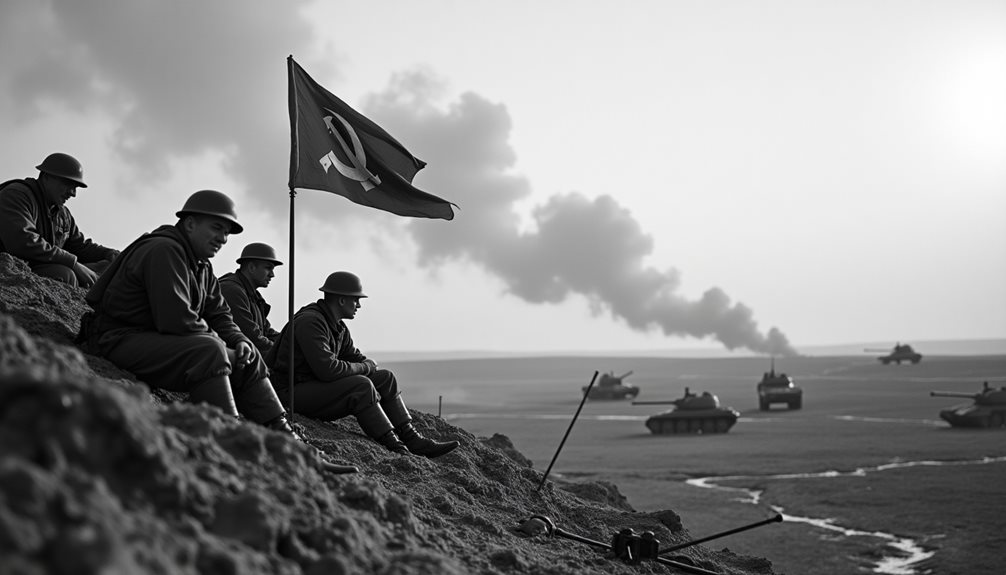As you explore Russian Orthodox Christmas, celebrated on January 7th, you’ll find it steeped in rich traditions and spiritual depth, set apart by the Julian calendar. This celebration isn’t just about the date; it’s an immersion into a mosaic of ancient customs and profound liturgical practices. You might wonder how the Twelve-Dish Feast uniquely honors the Apostles and what role caroling plays in fostering community spirit. These traditions reveal much about the resilience of faith and cultural identity. But what truly makes this holiday resonate so deeply within Russian society, and how are these traditions upheld across the globe?
Historical Background
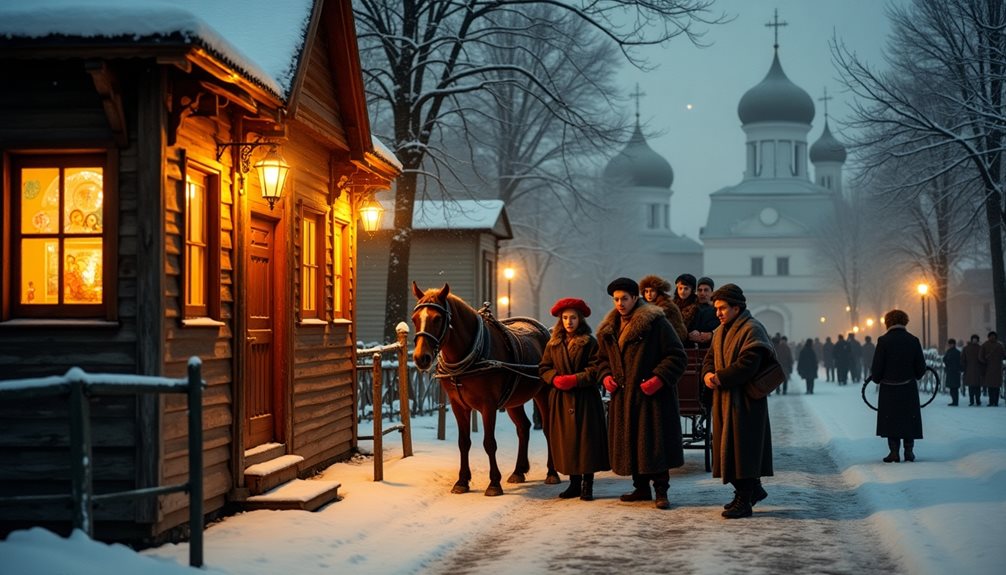
The historical background of Russian Orthodox Christmas is deeply rooted in the religious and cultural transformations that occurred over centuries.
Its Russian origins trace back to the adoption of Christianity by Kievan Rus’ in 988 AD, when Prince Vladimir the Great embraced the Eastern Orthodox faith. This pivotal moment sparked a Christmas evolution that intertwined with Russia’s unique cultural identity.
Over time, the observance of Christmas grew, blending local customs with spiritual practices.
As you explore this evolution, consider how the Russian Orthodox Church maintained distinct traditions, even under political regimes seeking to suppress religious freedom.
The resilience of these traditions demonstrates a celebration that’s both a reflection of faith and a symbol of cultural identity, offering a richer understanding of Russian heritage.
Julian vs. Gregorian Calendar
To understand the timing of Russian Orthodox Christmas, you must examine the differences between the Julian and Gregorian calendars. The Julian calendar, instituted by Julius Caesar in 45 BCE, lags behind the Gregorian calendar by 13 days. This shift results from the Gregorian calendar’s introduction in 1582 to correct the drift of the equinoxes.
While Western countries gradually adopted the Gregorian system, the Russian Orthodox Church maintained the Julian calendar.
These calendar differences have cultural implications. In Russia, Christmas is observed on January 7th, offering a unique perspective on holiday traditions. This illustrates a broader desire to preserve cultural identity and autonomy in an increasingly globalized world.
Religious Significance
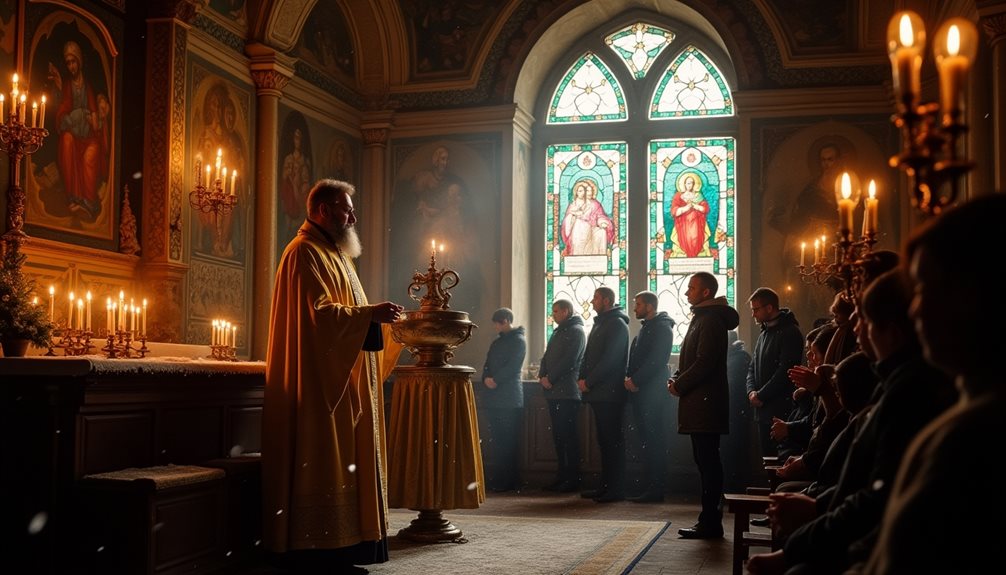
Understanding the calendar differences lays the groundwork for appreciating the religious significance of Russian Orthodox Christmas. Celebrated on January 7th due to the Julian calendar, this day holds deep spiritual reflection.
You’re invited to explore the birth of Jesus Christ, which symbolizes renewal and hope. It’s a time for contemplating faith, personal growth, and your connection to the divine.
Community worship plays a central role, as you join others in honoring this sacred event. The collective experience strengthens communal bonds and reinforces shared beliefs.
Through liturgies and prayers, you actively participate in a tradition that transcends time. By engaging in these rituals, you embrace both spiritual freedom and unity, deepening your understanding of faith’s role in your life.
Traditional Christmas Liturgy
In the heart of Russian Orthodox Christmas, traditional liturgy takes center stage, offering a profound and structured approach to worship.
You’ll find that Christmas hymns powerfully echo throughout the church, creating an atmosphere rich with spiritual depth. These hymns, integral to the liturgy, guide participants in embracing the divine mystery of Christ’s birth.
Liturgy rituals, deeply rooted in centuries-old traditions, provide a framework that emphasizes reflection and reverence. Through these rituals, you engage in a shared journey, fostering a sense of community and continuity.
While the structure may seem rigid, it paradoxically offers a sense of freedom, allowing individuals to connect with their faith in a meaningful way.
The liturgy’s timeless beauty lies in its ability to inspire personal introspection and communal unity.
Twelve-Dish Christmas Feast
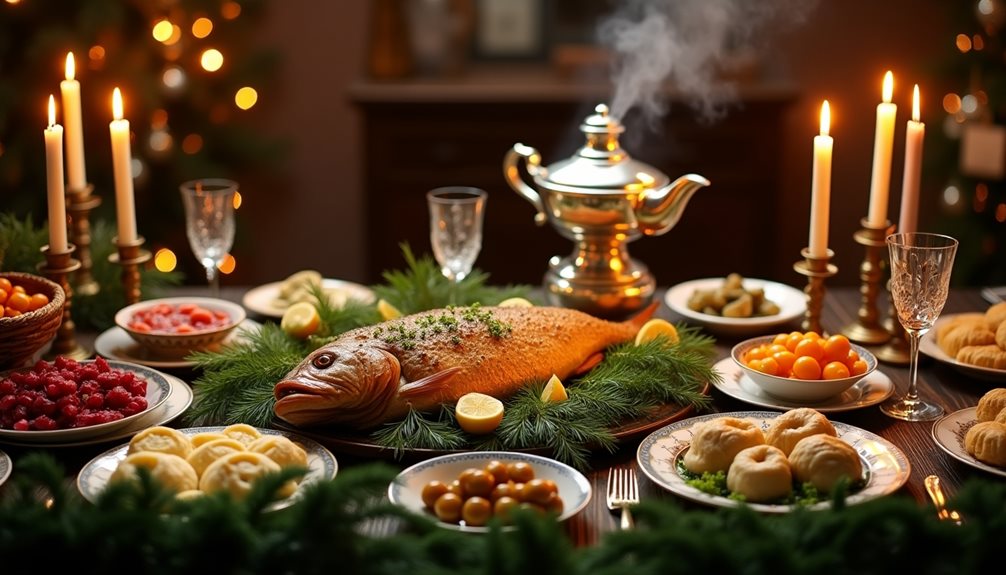
While the liturgical celebrations offer spiritual depth, the Twelve-Dish Christmas Feast provides a tangible connection to Russian Orthodox traditions.
You’ll find this culinary experience rich in symbolism and meaning, with each dish representing one of the Apostles. Traditional dishes vary but often include borscht, herring, and kutya, a sweet grain pudding. These festive flavors not only satisfy but also serve as a form of cultural expression, reflecting the diverse heritage of Russian Orthodoxy.
As you partake in this feast, you’re engaging in a practice that transcends mere sustenance.
It’s a celebration of faith, family, and freedom, inviting you to explore the historical and spiritual roots of these customs. The Twelve-Dish Christmas Feast offers a unique way to experience the richness of Russian culture.
Customs and Traditions
The customs and traditions surrounding Russian Orthodox Christmas are deeply rooted in history and spirituality, providing a window into the cultural identity of its practitioners.
You’ll find that caroling traditions play a significant role, with groups of singers, often children, visiting homes to perform ancient hymns and songs, fostering community and connection.
These carolers, known as “kolyadki,” are traditionally rewarded with treats, reflecting a spirit of generosity and hospitality.
Festive decorations also hold significance, as they transform homes into vibrant spaces of warmth during the harsh winter.
You’d notice the use of handmade ornaments, such as straw stars and religious iconography, which blend artistic expression with devotion.
Together, these practices offer a rich mosaic of meaning, balancing reverence with joy.
Celebrations Worldwide
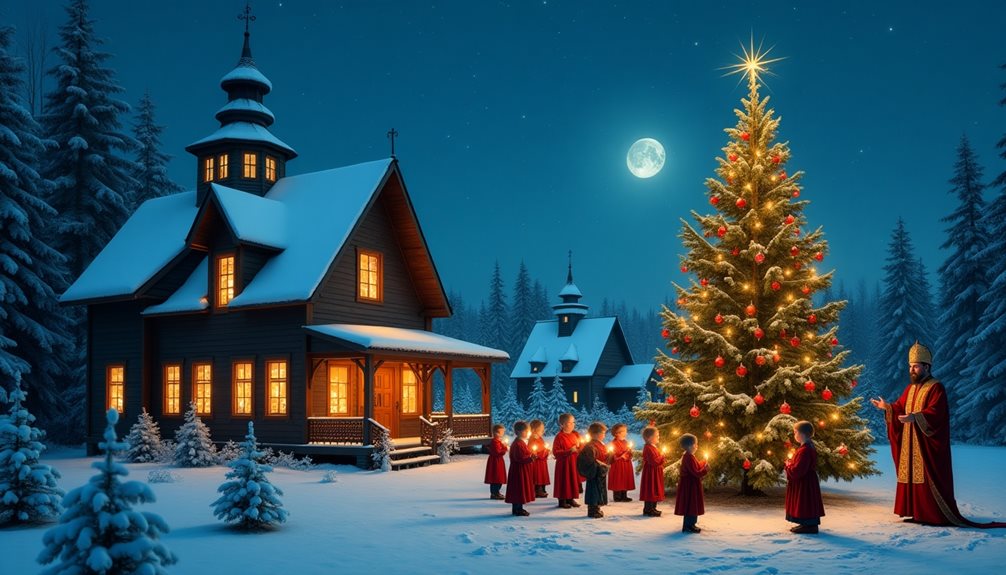
Russian Orthodox Christmas celebrations frequently extend beyond the borders of Russia, reflecting the global presence of the Orthodox Church.
As you explore these global observances, you’ll notice how various countries incorporate unique cultural variations into their festivities. In the United States, for example, Orthodox communities might blend traditional Russian practices with local customs, creating a diverse mosaic of celebration.
Meanwhile, in Greece, the observance is marked by vibrant liturgies and joyous family gatherings that emphasize communal ties.
The freedom to celebrate according to one’s cultural background is an indication of the adaptability and resilience of Orthodox traditions.
Whether in Eastern Europe or North America, these celebrations serve as a reminder of the universal spirit of Christmas, transcending geographic and cultural boundaries while maintaining a deep sense of identity.



